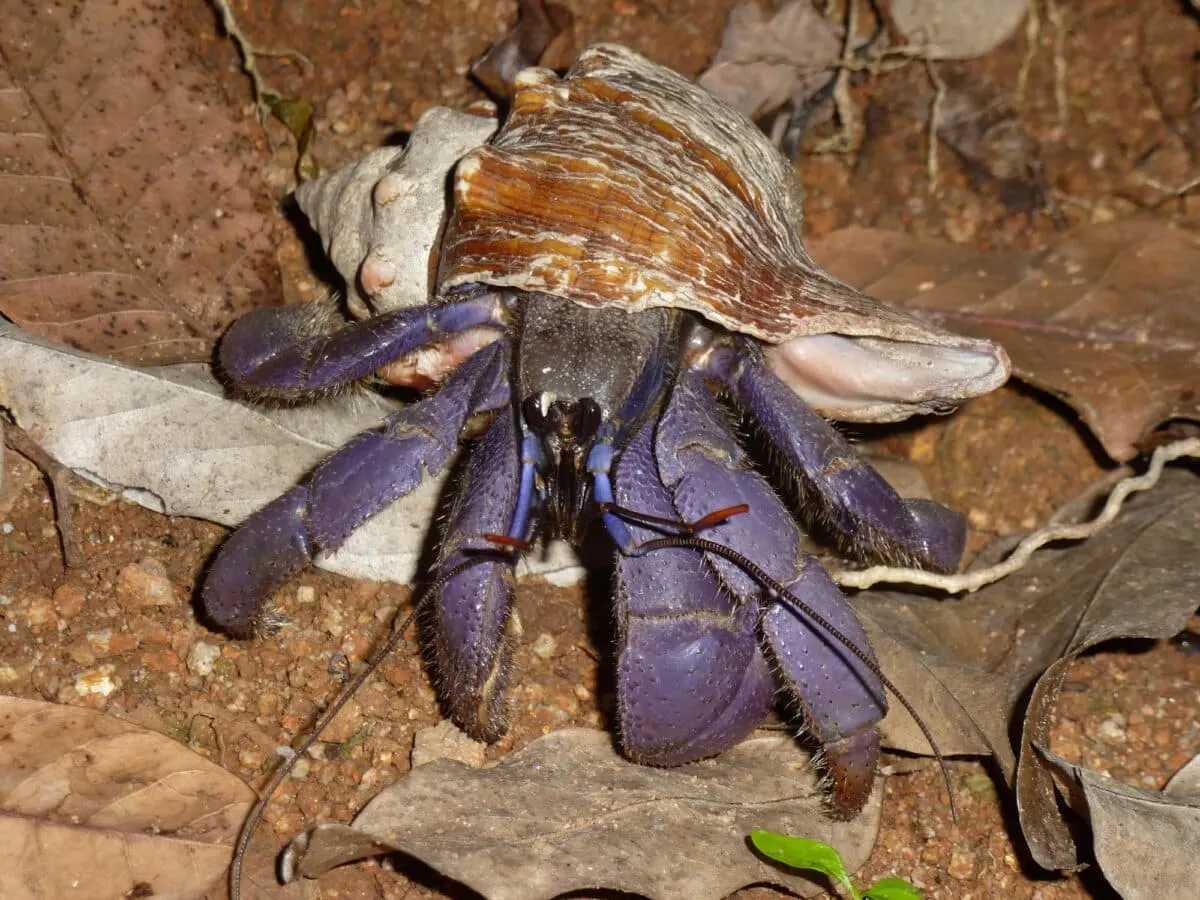The world’s largest Arthropod is the Coconut Crab – which can crack open coconuts with its giant claws.
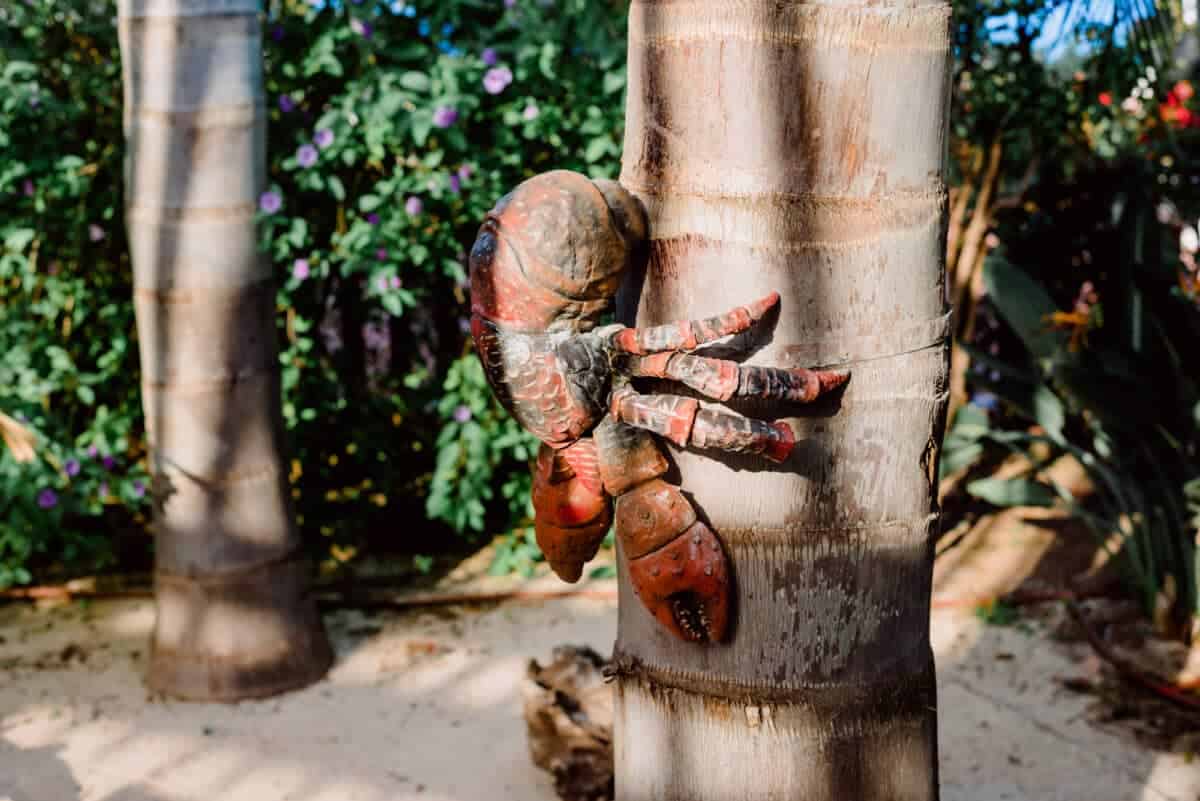
Meet the largest land-dwelling anthropoid: the coconut crab. This unique creature has developed some remarkable features and adaptations to survive in its terrestrial environment. It’s a genuinely fascinating species; still, few people are familiar with it.
From its peculiar anatomy to its extraordinary abilities to its unusual social behaviors, there are mountains of exciting information to discover about this unique animal! So come along as we delve into the world of coconut crabs and explore their mysterious lives together.
Key Points
- Coconut crabs are the largest land-based arthropods, growing up to three feet long and weighing up to nine pounds.
- They can climb trees and crack open coconuts with their powerful claws.
- Coconut crabs have a unique strategy for avoiding predators by burying themselves in the sand.
- Their diet, including coconuts and carrion, can impact food availability for other animals and the ecosystem.
- Conservation efforts are needed to protect coconut crabs from habitat destruction and overexploitation.
Introducing the Coconut Crab
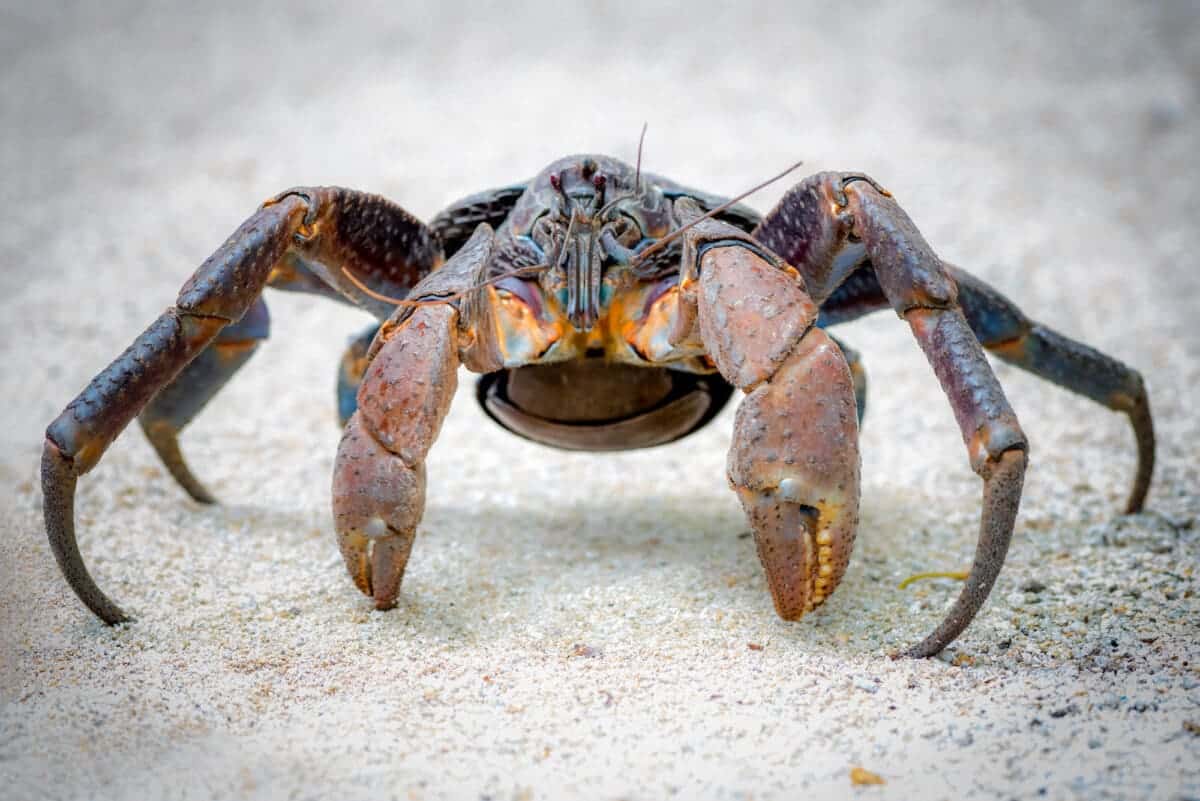
The Coconut Crab may seem like something out of a horror movie, but these incredible creatures are genuine.
These massive crustaceans can grow up to three feet long and weigh as much as 9 pounds. This impressive size makes them the largest land-based arthropods in the world.
Found primarily on islands in the Pacific and Indian Oceans, these crabs live in lush rainforests and along rocky shores.
They are known for their ability to crack open coconuts with their powerful claws. Likewise, these crabs are also skilled climbers and scavengers. With their striking appearance and unique habits, it’s no wonder that the Coconut Crab has become a popular topic of fascination among nature enthusiasts and everyday people.
Size and Behavior
- The coconut crab, or the robber crab, is a giant among arthropods. With a leg span of up to three feet, it is the largest land-living arthropod in the world.
- This impressive creature can weigh up to nine pounds, and its claws are powerful enough to crack open coconuts, hence its name. Despite their intimidating size, coconut crabs are not aggressive toward humans.
- They are shy and nocturnal creatures. While they are not currently considered endangered, their population has been dramatically reduced due to over-harvesting in some areas.
- These crabs communicate through chemical signals, which they release to mark their territories and attract potential mates. During the breeding season, males engage in fierce battles over females, using their powerful claws to establish dominance.
As fascinating as they are, it is best to admire these gentle giants from a safe distance.
The Coconut Crab’s size is impressive, considering its an Arthropod – but it’s got nothing on the heaviest Manta-Ray ever recorded.
An Overview of Their Physical Traits
| Traits | |
|---|---|
| Weight | Up to 9 pounds |
| Diet | Coconuts, fruits, carrion |
| Habitat | Islands in the Pacific and Indian Oceans |
| Length | Up to 3 feet |
| Lifespan | Up to 60 years |
| Conservation Status | Not currently considered endangered |
| Social Behavior | Primarily solitary with occasional social interactions |
Survival Strategies of the Coconut Crab
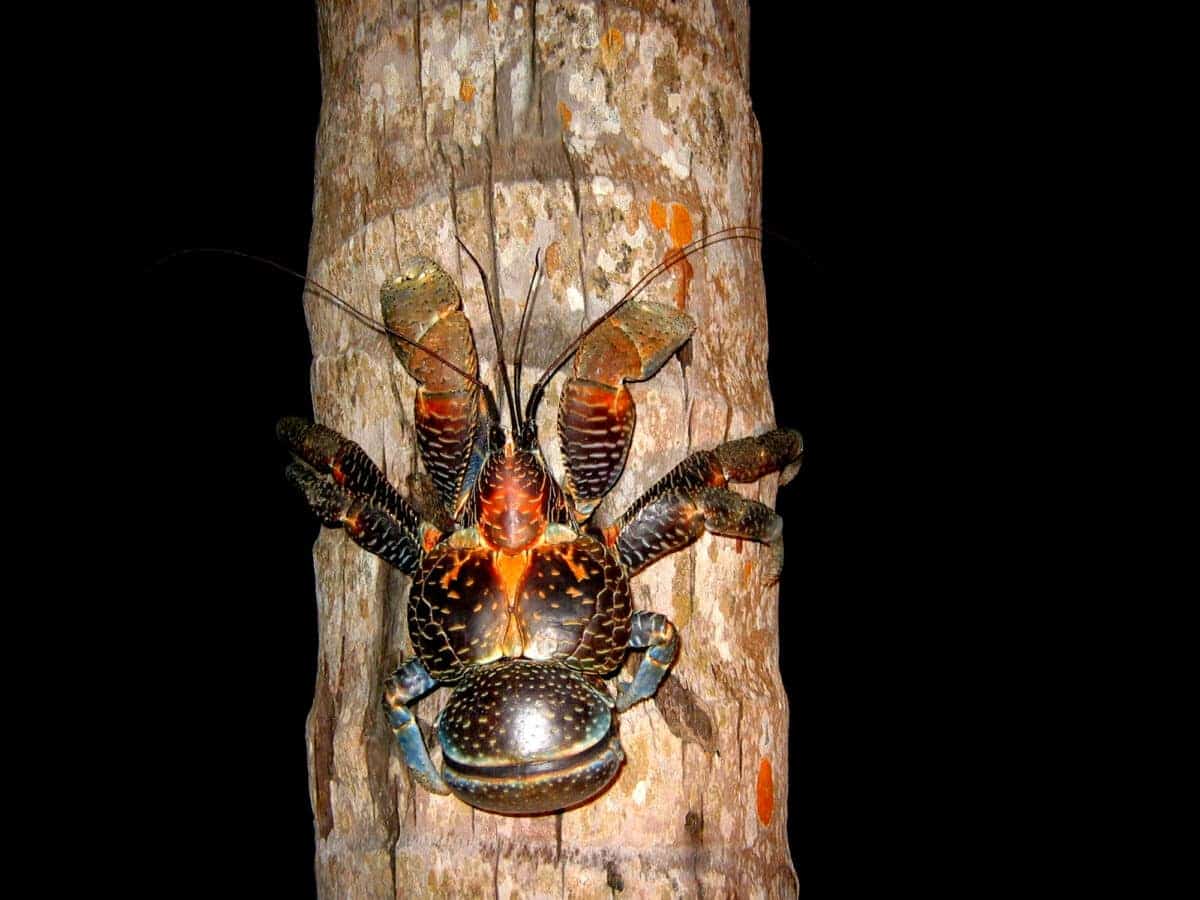
Giant arthropods can grow to be the size of a small dog and have powerful claws capable of exerting incredible force.
One of the most remarkable things about coconut crabs is their ability to climb trees. Despite their size and weight, they can scale the trunks of palm trees in search of coconuts, which they have a knack for cracking open with their impressive claws.
In addition, coconut crabs have a unique strategy for avoiding predators, such as birds and other predators. They bury themselves in the sand, exposing only their eyes, allowing them to blend in with their surroundings and avoid detection.
The Diet of a Coconut Crab and Its Impact on The Ecosystem
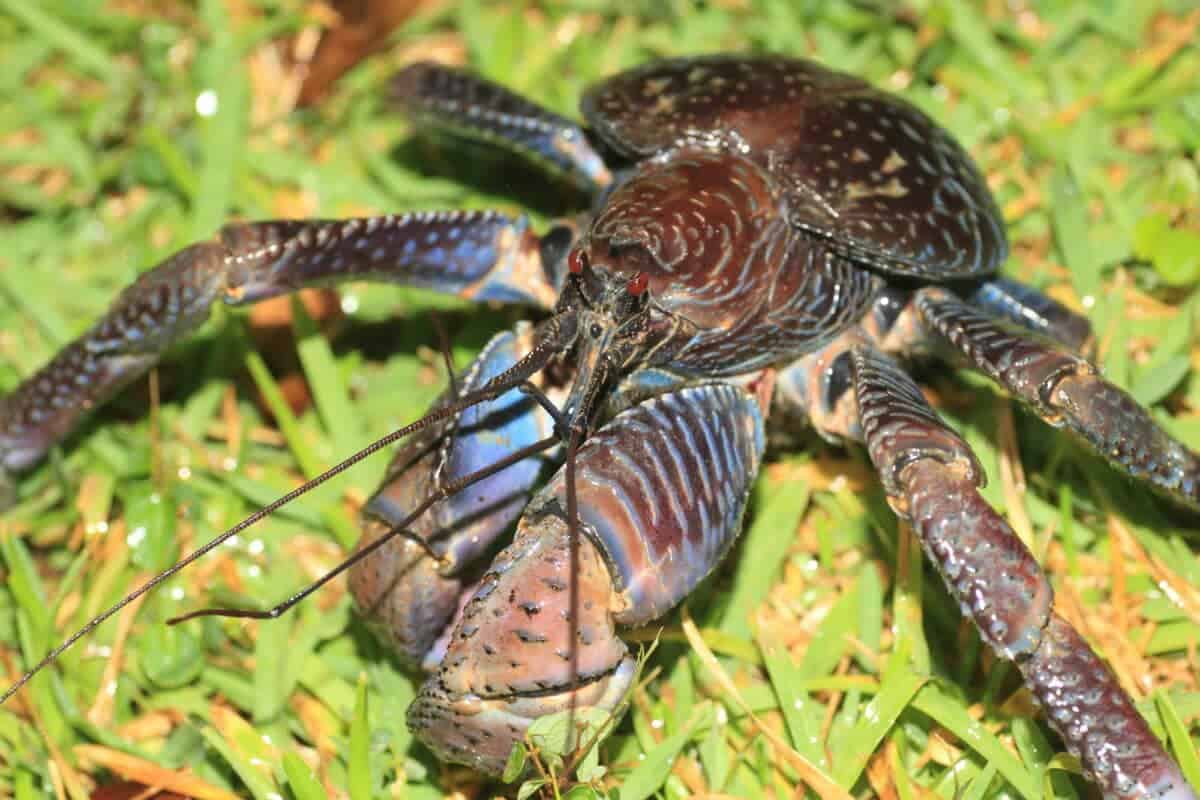
The coconut crab is a fascinating creature with a special diet that can significantly impact the ecosystem. With a taste for coconuts, fruits, and even carrion, these land-dwelling crabs are known to climb trees and crack open coconuts with their massive claws.
While their diet may seem harmless, the coconut crab’s preference for consuming such items can lead to a lack of food availability for other critters.
Moreover, coconut crab populations can become so large that they strip entire trees of their fruit, leaving little for birds and other animals to eat. Therefore, it is essential to study the diet of the coconut crab from an ecological standpoint to understand its full impact on the surrounding ecosystem.
That being said, they can also have a positive impact on their ecosystem – their scavenging behavior also helps in keeping the environment clean. They efficiently consume carrion, including dead animals and seabird chicks, which can otherwise become breeding grounds for pathogens and parasites. In this way, the coconut crab helps maintain a healthier ecosystem and minimizes the risk of disease transmission.
Unique Adaptations That Help the Coconut Crab Thrive
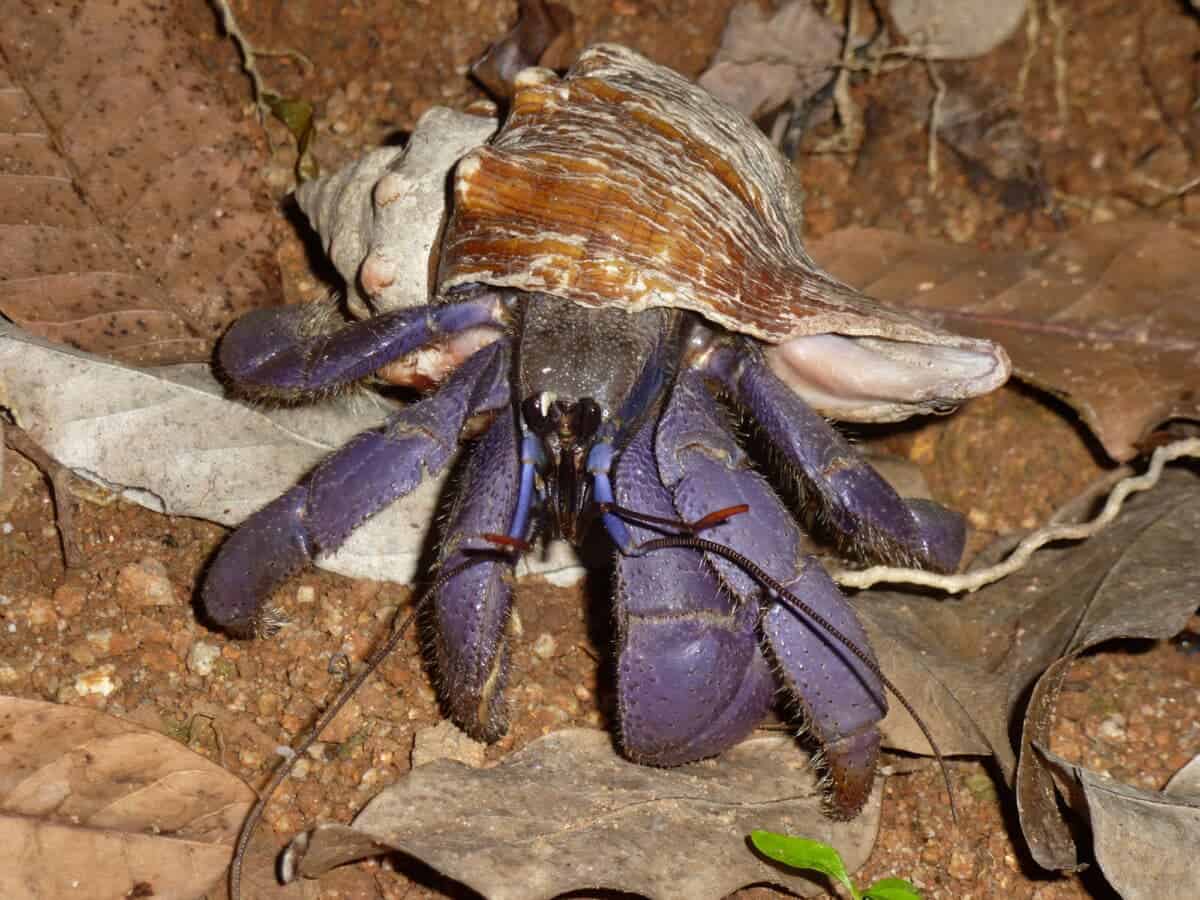
Coconut crabs, or Birgus latro, are among the most fascinating species to roam our planet.
They have adapted to their environment in some of the most unique ways. These creatures have massive and powerful claws that can crush almost anything that gets in their way, including coconuts.
Interestingly, they use these claws for more than getting their hands on their favorite snack – they also use them as lungs! Coconut crabs have a moist membrane in their shell that absorbs oxygen from the air, which is then transferred to their bloodstream to keep them alive.
This incredible adaptation has helped these creatures thrive in their environment and become the top predator in their ecosystem.
Fun Facts About the World’s Largest Arthropod
- #1 They have a keen sense of smell, detecting food from long distances.
- #2 They have a unique ability to crack open coconuts with their powerful pincers.
- #3 These crabs are excellent swimmers and can survive in both saltwater and freshwater.
- #4 Coconut crabs have a lifespan of up to 60 years.
- #5 They have an impressive ability to regenerate lost limbs.
- #6 Coconut crabs have an amazing climbing speed, capable of reaching up to 10 feet per minute.
Conservation Efforts For the World’s Largest Arthropod
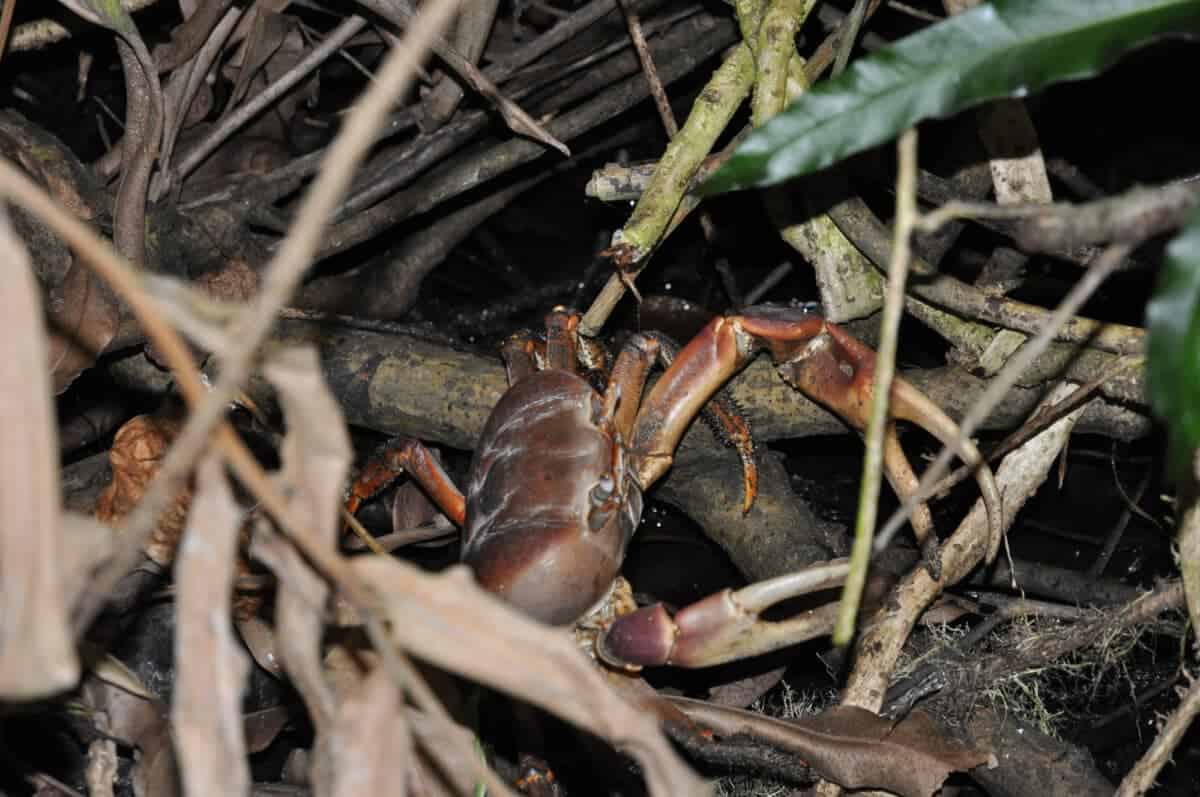
Coconut crabs are unique and fascinating species that play an essential role in their ecosystem. Unfortunately, their populations have suffered from habitat destruction, overexploitation for food, and the pet trade. However, there are steps that we can take to help conserve this species:
1. Protect their habitats: Coconut crabs are found in coastal areas within the range of the Pacific and Indian Oceans. Conserving their natural habitats will help ensure their populations thrive.
2. Promote responsible fishing practices: Overfishing for food and the pet trade can lead to severe declines in coconut crab populations. Governments and conservation organizations can help by promoting responsible and sustainable fishing practices.
3. Raise public awareness: Educating people about the importance of coconut crabs and the threats they face can help raise awareness and encourage conservation efforts.
4. Conduct research: More research is needed to understand the biology and behavior of coconut crabs, which can help inform conservation strategies.
Overall, conservation efforts are critical to protect the survival of this fascinating species. By taking steps to protect their habitats, promote sustainable fishing practices, raise public awareness, and conduct research, we can help ensure that future generations can enjoy the wonder of the coconut crab.
Conclusion
The coconut crab is truly a remarkable creature with many fascinating features. They are true fighters, able to adapt to challenging habitats and outsmart predators.
As humanity expands its understanding of these amazing animals, one can only imagine what new secrets will be discovered! For now – let us get familiar with the largest land-dwelling anthropoid and respect the hardiness of coconut crabs in their natural environment.
Environmental education through this species can influence positive change and encourage others to take action toward protecting the environment.
This final take serves as a reminder that although humans may have created significant environmental destruction in coastal areas, not all hope is lost if we strive towards protecting our fragile natural balances.
Thank you for reading this article about the world’s largest land-dwelling Arthropod! If you enjoyed this, you should take a look at this article about the loudest animal, uncover the longest snake in the world, or get to know the Asian elephant.
- Magpie Bird Is Reunited with Her Dog Best Friend - April 24, 2024
- Dog Saves Another Dog From Drowning in Fish Pond - April 23, 2024
- Man On Motorbike Rescues Cat From Highway - April 23, 2024

